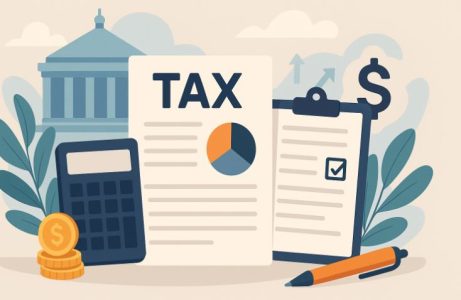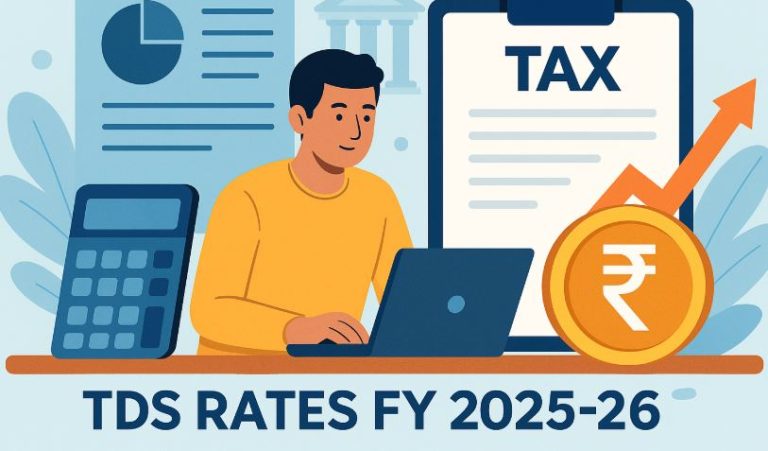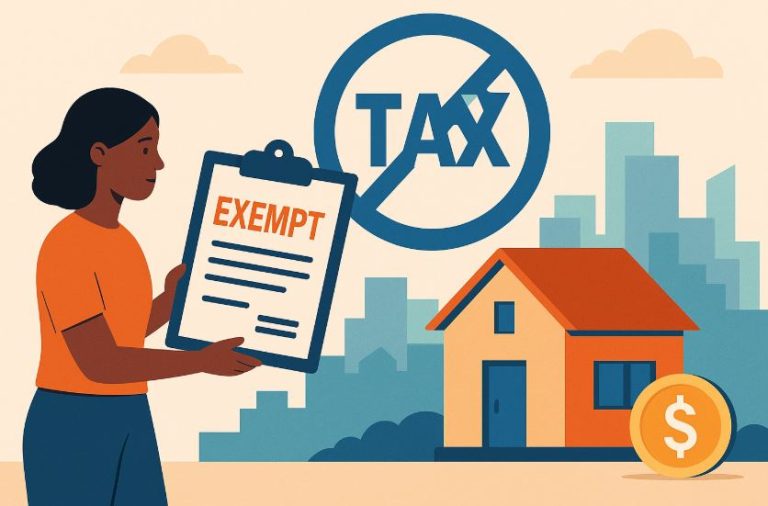Are you aware of the recent changes introduced by the CBDT in 2025? The Central Board of Direct Taxes has announced the Income-tax (Twenty Second Amendment) Rules, 2025, bringing clarity to salary and gross total income thresholds under Section 17 of the Income-tax Act.
These updates aim to streamline tax classification and compliance for salaried individuals and employers across India. Here’s everything you need to know about the new income tax rules.
Why Did CBDT Introduce the New Income Tax Rules in 2025?
The Indian tax system has always evolved to align with changing economic conditions and government priorities. In 2025, the Central Board of Direct Taxes (CBDT) introduced a significant update to the Income-tax Rules through Notification No. 133/2025, dated August 18, 2025.
This change was not arbitrary but a well-thought-out step to bring clarity and precision to the interpretation of specific clauses under Section 17 of the Income-tax Act, 1961.
Previously, the law mentioned clauses under which certain components of income were taxable but did not specify exact monetary thresholds.
This ambiguity led to confusion among taxpayers and even tax professionals while interpreting salary components and total income limits under certain tax provisions.
To resolve this, the CBDT introduced two new rules, Rule 3C and Rule 3D, which now clearly define income thresholds under section 17.
These rules help standardize the treatment of certain income heads, especially in cases where the salary or gross total income of the individual impacts the applicability of specific exemptions, perquisites or deductions.
By laying down explicit monetary figures, the CBDT aims to make the law more objective, reducing room for subjective interpretation or disputes.
This move also aligns with the government’s broader vision of simplifying tax administration and boosting transparency in fiscal policies. For salaried individuals and employers, it brings more certainty and consistency in tax computation.
What Is the Income Tax (Twenty Second Amendment) Rules, 2025?

The Income-tax (Twenty Second Amendment) Rules, 2025 were officially notified by the CBDT on August 18, 2025. These amendments have been incorporated into the Income-tax Rules, 1962 and specifically target Section 17 of the Income-tax Act, 1961.
The key purpose behind this amendment is to define the thresholds for salary and gross total income to determine the applicability of certain clauses.
This notification introduced two key rules into the existing tax framework:
- Rule 3C: Specifies the prescribed income under the head “Salaries” as ₹4 lakh for the purposes of item (c) of sub-clause (iii) of clause (2) of section 17.
- Rule 3D: Defines ₹8 lakh as the prescribed gross total income for the purposes of clause (vi) of the proviso to clause (2) of section 17.
These additions aim to resolve long-standing ambiguity in interpreting these provisions. By clearly stating income limits, the amendment ensures a unified approach to assessing taxable income for certain categories of taxpayers.
The notification is legally backed by Section 295 of the Income-tax Act, which empowers the Central Government to make rules for carrying out the provisions of the Act. These rules came into immediate effect upon their publication in the Official Gazette.
The introduction of these clear benchmarks is an administrative reform designed to support clarity, efficiency and consistency in applying income tax provisions, especially those relating to perquisites and employer-employee relationships.
How Does Rule 3C Define the Salary Income Limit?
Rule 3C, inserted through the 2025 amendment, plays a pivotal role in tax classification for salaried employees. This rule focuses on defining what constitutes a threshold for salary income under item (c) of sub-clause (iii) of clause (2) of Section 17 of the Income-tax Act.
According to Rule 3C, the prescribed salary income limit is ₹4 lakh. This income cap is crucial in determining whether certain perquisites or tax treatments are applicable to a salaried individual.
Rule 3C Clarifies
- The income under the head “Salaries” must not exceed ₹4 lakh for specific tax benefits or exclusions to be valid.
- If an employee’s salary exceeds this threshold, certain exemptions or perquisite treatments may be denied or altered.
- This rule ensures that only individuals falling under this salary bracket can access specific tax concessions.
Application in Practice
This rule is especially relevant in evaluating employer-provided benefits or reimbursements. Previously, there was vagueness about what income threshold constituted eligibility for such benefits.
Rule 3C now provides a standard reference, allowing both employees and employers to calculate tax liabilities accurately.
CBDT New Income Tax Rules 2025 – What Does Rule 3D Say About Gross Total Income?

In addition to defining salary limits, the 2025 amendment also addresses gross total income by introducing Rule 3D. This rule stipulates that for the purposes of clause (vi) of the proviso to clause (2) of Section 17, the prescribed gross total income should not exceed ₹8 lakh.
Key Interpretations of Rule 3D
- If a taxpayer’s gross total income surpasses ₹8 lakh, certain perquisites may become fully or partially taxable.
- The rule primarily focuses on setting eligibility criteria for specific exemptions tied to gross income.
- Rule 3D establishes a benchmark that simplifies decisions around the inclusion of benefits, allowances, or reimbursements under taxable income.
Salary vs. Gross Total Income Thresholds
| Rule | Income Category | Prescribed Limit | Applicable Section |
| Rule 3C | Salary Income | ₹4 lakh | Section 17(2)(iii)(c) |
| Rule 3D | Gross Total Income | ₹8 lakh | Section 17(2)(vi) of the Proviso |
This rule helps prevent misclassification of income and supports consistency in handling exemptions under salary-related provisions. It also guides tax officers during audits and assessments.
How Will These Income Thresholds Affect Salaried Employees?
For salaried employees, the implications of Rules 3C and 3D are quite substantial. These rules effectively serve as income filters that determine how various salary components are treated under the law.
Potential Impact on Employees
- Employees earning less than ₹4 lakh in salary could remain eligible for specific exemptions related to perquisites like meal vouchers, transport allowance, or medical reimbursements.
- Those with gross total income under ₹8 lakh may qualify for different treatment of reimbursements and employer contributions that would otherwise be considered taxable.
- Employees earning above these thresholds may lose access to these exemptions, potentially increasing their tax liability.
Implications for HR and Payroll Teams
The introduction of defined thresholds simplifies the process of calculating taxable income and structuring salary packages. HR teams can now:
- Easily classify employee benefits based on income categories.
- Avoid disputes or ambiguities during income tax filings.
- Automate compliance through payroll software updates using these benchmarks.
Are These Rules Applicable Immediately or Retrospectively?

The Income-tax (Twenty Second Amendment) Rules, 2025 came into force on August 18, 2025, the date of their official publication in the Official Gazette. These rules are not retrospective, which means they are applicable only from the date of notification onward.
This ensures that any tax assessments, salary structures, or employer declarations prior to this date will remain governed by the previous framework. From a compliance perspective, this also means that:
- Employers must update their systems for all payments or benefits made on or after August 18, 2025.
- Taxpayers must consider the new limits while filing returns for financial years post-notification.
There is no need to re-evaluate old assessments unless the tax authority provides further clarification or separate notification.
How Do These Amendments Compare to the Previous Rules?
Before the amendment, the income tax law under Section 17 provided general principles but lacked specific numerical benchmarks. This led to inconsistency in how provisions were applied.
Comparison Table
| Aspect | Before Amendment | After Amendment (2025) |
| Salary Income Threshold | Not specifically defined | ₹4 lakh under Rule 3C |
| Gross Total Income Threshold | Not clearly stated | ₹8 lakh under Rule 3D |
| Applicability | Based on interpretation | Now based on fixed criteria |
| Compliance | Ambiguous | Clearly defined and streamlined |
These amendments have resolved long-standing uncertainties by transforming subjective thresholds into objective rules.
Who Benefits the Most From the CBDT New Income Tax Rules 2025?
The real beneficiaries of these new rules are:
Employees
- Especially those falling under the ₹4 lakh salary and ₹8 lakh gross total income categories.
- Eligible for exemptions that may have previously been challenged.
Employers
- HR and payroll departments benefit from having clearer policies and reduced compliance risks.
- Can confidently structure salary packages using fixed benchmarks.
Tax Professionals
- Easier to advise clients with clearly defined income slabs for exemptions.
- Reduces litigation or disputes over interpretation of Section 17 clauses.
For middle-income earners, this rule ensures clarity and possible tax benefits if they meet the prescribed limits.
What Should Taxpayers and Employers Do to Comply With the New Rules?

With immediate effect from August 18, 2025, both employers and employees must take specific actions to ensure compliance with the CBDT New Income Tax Rules 2025.
For Employers
- Update payroll software to reflect ₹4 lakh and ₹8 lakh thresholds.
- Communicate changes to employees, especially those near the income limits.
- Re-categorize perquisites and benefits accordingly.
- Review employee CTC structures to remain compliant.
For Taxpayers
- Evaluate your gross and salary income in light of the new thresholds.
- Ensure accurate declarations of exemptions during return filing.
- Consult a tax advisor if you are close to the threshold limits.
These actions will help avoid tax misreporting and unnecessary penalties during audits or filings.
Conclusion
The CBDT New Income Tax Rules 2025 mark a crucial development in simplifying and streamlining India’s income tax landscape. By introducing clear-cut income thresholds through Rule 3C and Rule 3D, the government has taken a significant step toward transparency and consistency in tax treatment, especially under Section 17.
This move is a welcome change for both employers and employees, offering clarity on eligibility for exemptions and perquisites. With ₹4 lakh as the salary limit and ₹8 lakh as the gross total income limit, taxpayers now have a definitive framework to assess their tax obligations.
As the tax environment continues to evolve, these amendments serve as a reminder of the importance of staying updated, restructuring salary components, and ensuring accurate compliance. Whether you’re a taxpayer, HR manager, or consultant, understanding and acting on these rules is essential for financial and legal well-being.
Frequently Asked Questions
What is the effective date of the CBDT New Income Tax Rules 2025?
The rules became effective on August 18, 2025, the date they were published in the Official Gazette.
What is the gross total income threshold under Rule 3D?
Rule 3D sets the gross total income limit at ₹8 lakh for applying certain provisions of Section 17.
Who needs to take action due to the new rules?
Both salaried employees and employers must align their tax declarations and payroll systems accordingly.
How do these rules benefit middle-income earners?
Those earning under the prescribed limits may continue to receive tax exemptions that could be lost otherwise.
Are tax slabs or rates changed by these rules?
No, the CBDT New Income Tax Rules 2025 only clarify income thresholds and do not alter the existing tax slabs.




